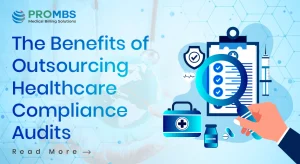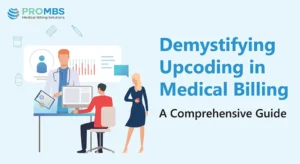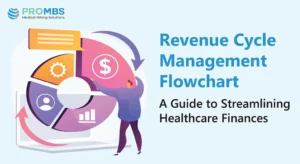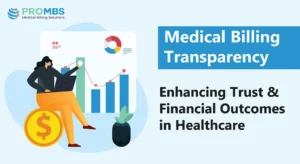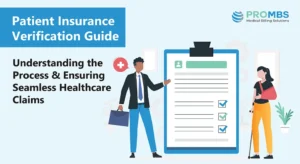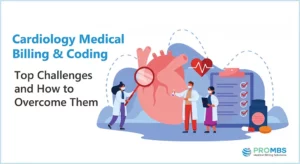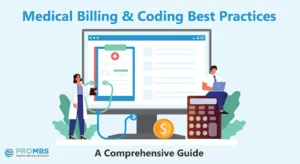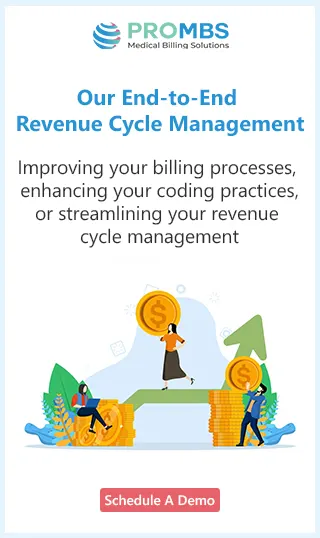What is the Process Of Healthcare RCM?
Revenue cycle management Billing is a critical process for healthcare organizations that allows them to effectively manage their financial operations, ensuring timely and accurate payment for the services they provide. By implementing RCM strategies, healthcare providers can optimize their revenue streams and maintain financial stability. In this article, we will explore “what is Healthcare revenue cycle management process and benefits”.
Step 1: Patient Registration and Scheduling:
The revenue cycle begins with patient registration and scheduling. This step involves capturing essential patient information, such as demographics, insurance details, and contact information. Accurate and complete registration ensures that the billing process proceeds smoothly, minimizing errors and delays in payment.
Step 2: Verification of Insurance Eligibility:
After patient registration, the next crucial step in revenue cycle management is verifying insurance eligibility. It is essential to confirm the patient’s coverage and determine the scope of benefits provided by their insurance plan. This step helps avoid claim denials and ensures accurate billing.
Step 3: Coding and Charge Capture:
Coding and charge capture involve assigning appropriate medical codes to the services provided by healthcare professionals. Accurate coding ensures proper reimbursement from insurance companies and government payers. It is vital to stay updated with current coding guidelines and regulations to maximize revenue.
Step 4: Claim Submission and Adjudication:
Once the services are coded, the claims are submitted to insurance companies for reimbursement. It is crucial to follow the specific requirements and guidelines of each payer to increase the chances of claim acceptance. Adjudication involves the review and processing of claims by the insurance company, leading to payment or denial.
Step 5: Payment Posting and Reconciliation:
After receiving payments from insurance companies and patients, the next step is payment posting and reconciliation. This involves accurately recording the payments received, identifying any discrepancies, and reconciling them with the billed amounts. Payment posting ensures proper accounting of the revenue generated and helps identify any outstanding balances.
Step 6: Denial Management and Appeals:
Denial management is a crucial step in healthcare revenue cycle management, as claim denials can result in delayed or lost revenue. Healthcare organizations must have a robust system in place to identify and address claim denials promptly. This includes analyzing denial trends, appealing denied claims, and implementing corrective measures to prevent future denials.
Step 7: Patient Billing and Collections:
The final step in the revenue cycle is patient billing and collections. This involves generating and delivering accurate and timely bills to patients for their share of healthcare expenses. It is important to have clear communication channels and payment options for patients, ensuring prompt payment and reducing accounts receivable.
Benefits of Revenue Cycle Management
Implementing effective revenue cycle management practices offers several benefits to healthcare organizations:
1. Improved Financial Performance in healthcare revenue:
By optimizing the revenue cycle, healthcare organizations can improve their financial performance. Timely and accurate reimbursement leads to increased cash flow, reduced accounts receivable, and improved revenue generation. It enables organizations to allocate resources effectively and invest in enhancing patient care
2-Enhanced Operational Efficiency:
Efficient revenue cycle management streamlines administrative processes, reduces manual errors, and minimizes redundant tasks. Automation of revenue cycle processes improves operational efficiency, allowing healthcare providers to focus on delivering quality patient care
3-Increased Patient Satisfaction:
A well-managed revenue cycle positively impacts the patient experience. Accurate billing, transparent financial information, and timely resolution of billing-related queries contribute to increased patient satisfaction. Patients appreciate clear and concise billing statements and convenient payment options
4: Better Compliance and Risk Management:
Effective revenue cycle management ensures compliance with regulatory requirements and reduces the risk of non-compliance penalties. By adhering to coding and billing guidelines, organizations can avoid legal and financial repercussions, safeguard their reputation and maintain trust with patients and stakeholders
5-Enhanced Decision-Making:
Accurate and comprehensive revenue cycle data provides valuable decision-making and strategic planning insights. By analyzing revenue trends, reimbursement patterns, and financial metrics, healthcare organizations can identify areas for improvement, optimize resource allocation, and develop proactive strategies for future growth
Conclusion:
In conclusion, revenue cycle management is vital for healthcare organizations to optimize their financial operations and ensure timely reimbursement. By following the key steps of patient registration, insurance verification, coding, claim submission, payment posting, denial management, and patient billing, healthcare providers can enhance their financial performance, operational efficiency, patient satisfaction, compliance, and decision-making capabilities.
Pro Medical Billing Solutions is here to help you. To learn more about “what is Healthcare revenue cycle management process and benefits” schedule a demo today!










